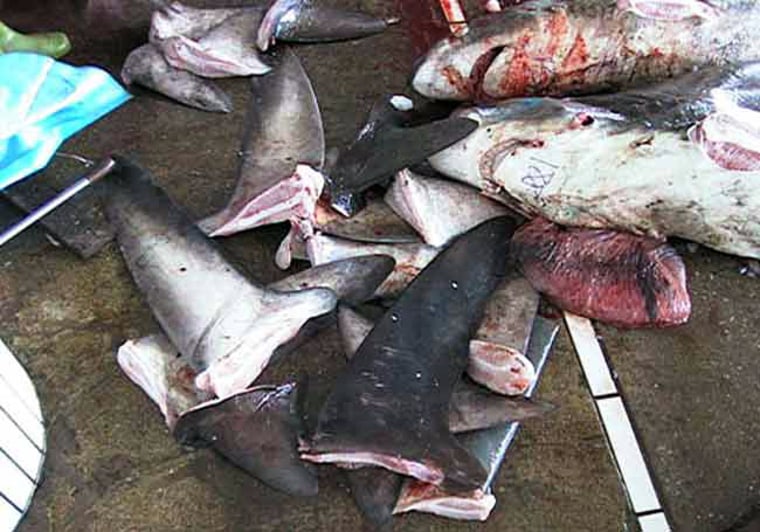The world's booming shark fin trade is killing up to 73 million sharks per year—about three times more than the official catch number reported to the United Nations, a new study concludes.
The findings, derived using data collected from illegal shark fin traders, are detailed in the October issue of the journal Ecology Letters.
"The shark fin trade is notoriously secretive. But we were able to tap into fin auction records and convert from fin sizes and weights to whole shark equivalents to get a good handle on the actual numbers," said study leader Shelley Clarke, an American fisheries scientist who works in Hong Kong and Japan.
Tons of shark flesh
The researchers arrived at their figure using a unique statistical model and data obtained from cooperative traders of shark fins in Hong Kong. Converting the figures to shark weights, they estimated that about 1.7 million tons of shark flesh is harvested each year. This translates to about 73 million sharks.
That's three to four times higher than the figure estimated by United Nations Food and Agricultural Organization (FAO), which keeps track of official shark catch records provided by member countries. The FAO's estimates for the amount of shark biomass caught each year range from 0.39 to 0.60 million tons per year.
The new figure is the first fishery-independent estimate of the global shark catch for the shark fin trade, the researchers say.
Fins are the most valuable parts of a shark and are used in shark fin soup, a delicacy served at Chinese weddings and business dinners in Southeast Asia and the Pacific Rim. Sharks are often still alive when their fins are sliced off, and their bodies are thrown back into the sea.
Scientists worry that the demand for shark fins could soon outpace the abilities of sharks to reproduce. This is probably already happening for one species, the blue shark, the researchers say. Their findings suggest that the current trade in blue sharks is close to or possibly even exceeding the species' maximum yield levels.
Data for other shark species is less complete, but the researchers think a similar thing might be happening to them as well.
"It is quite likely that sustainable catch levels have already been exceeded in some cases," Clarke said.
Ripple effects
The overfishing of sharks could have serious effects for the entire marine food chain in some ecosystems.
Another recent study found that removing sharks from a reef environment in the Caribbean had a trickling effect on other species. Without sharks, carnivorous fish that the sharks usually fed on thrived. The carnivorous fish, in turn, preyed on parrotfish that kept the corals clean.
In time, the reefs changed from one dominated by coral to one overrun by algae.
